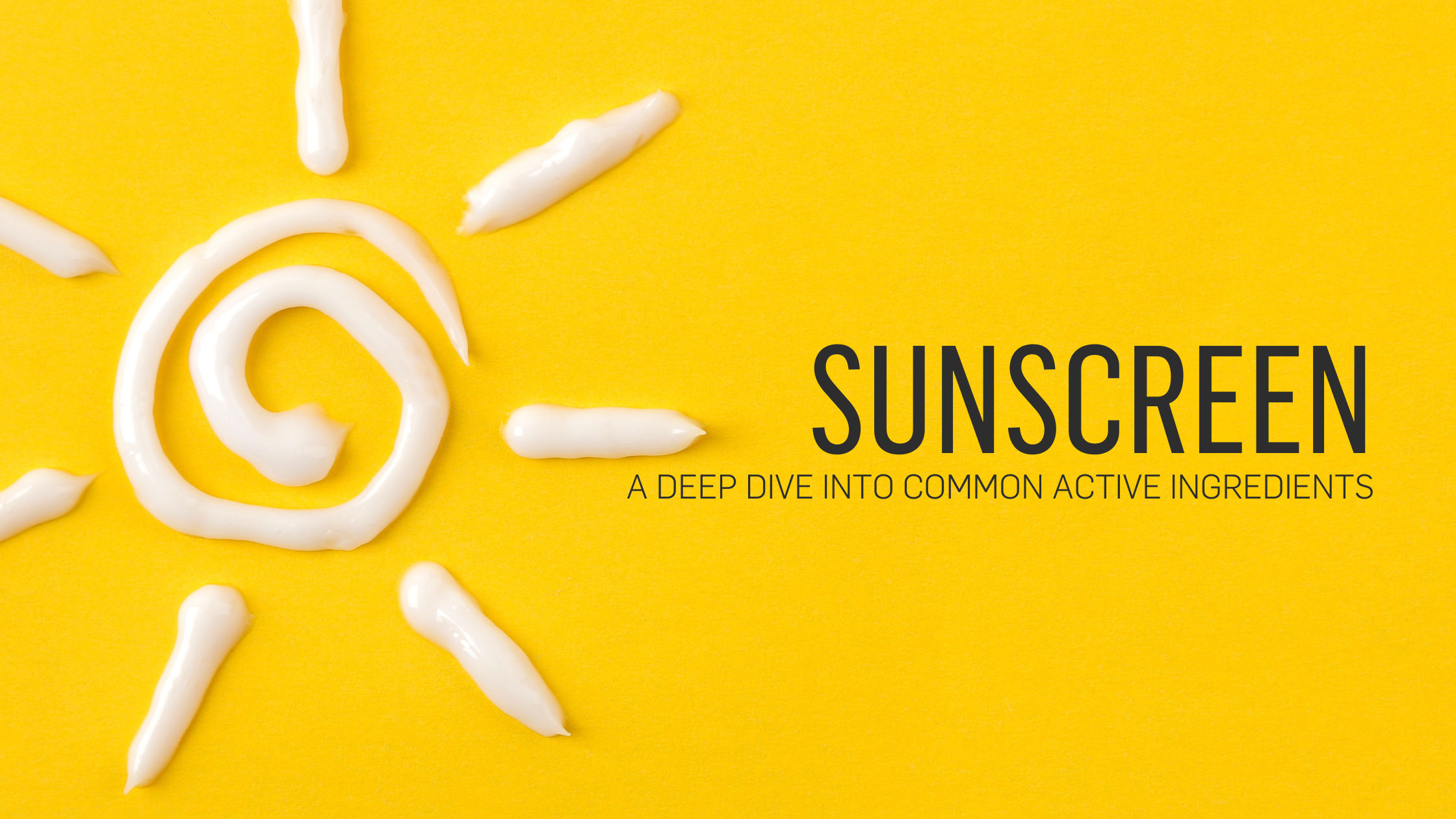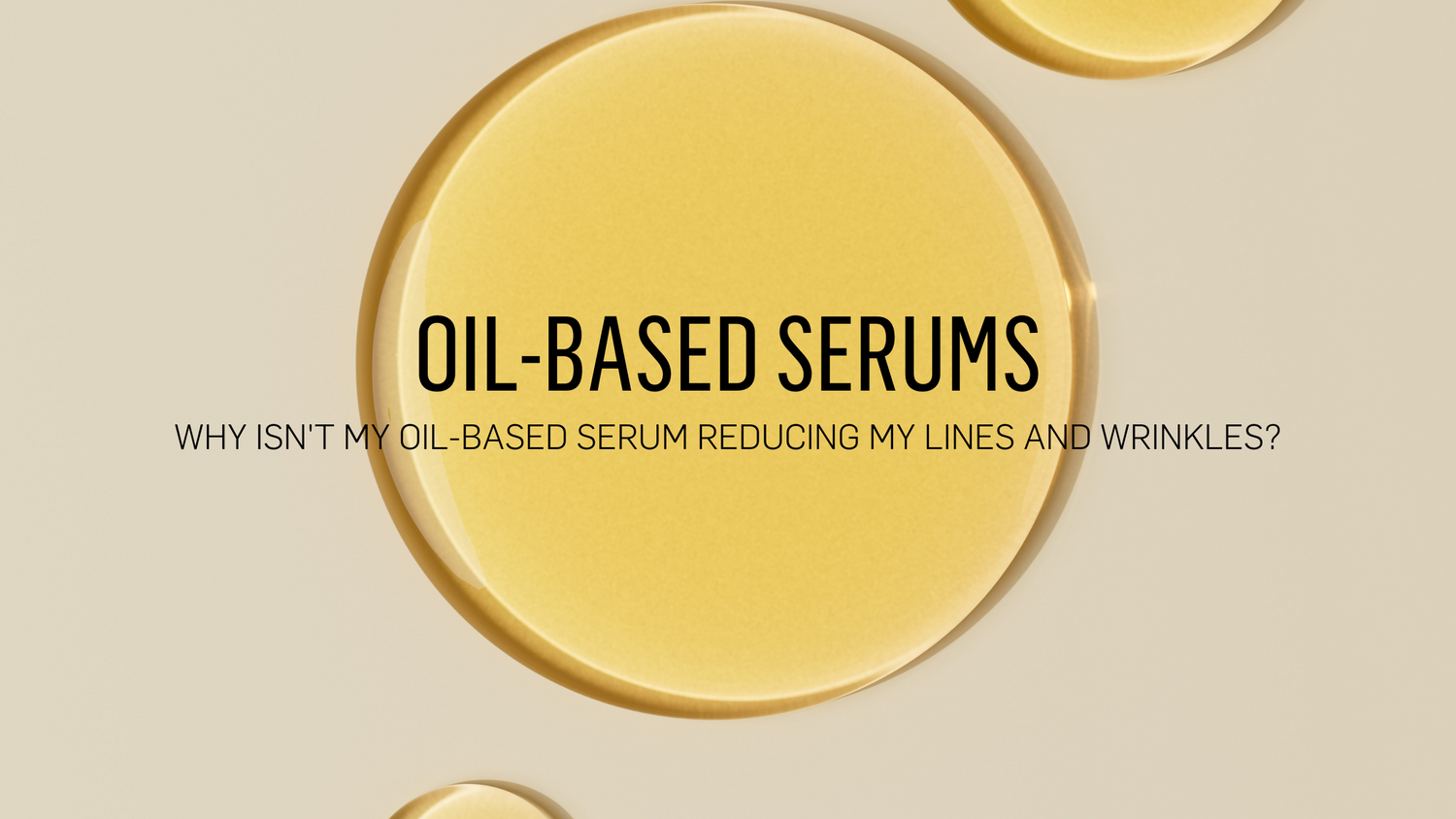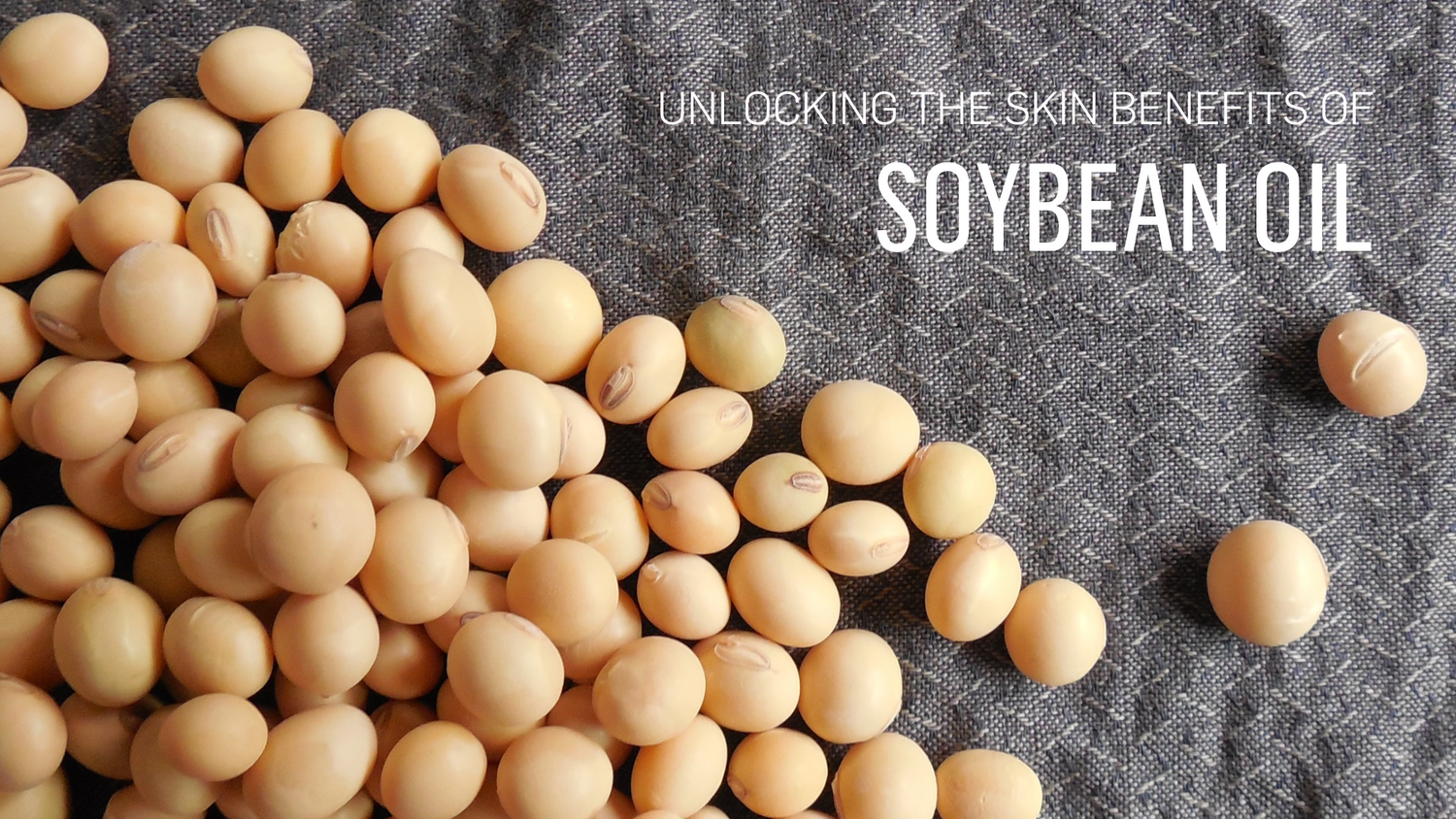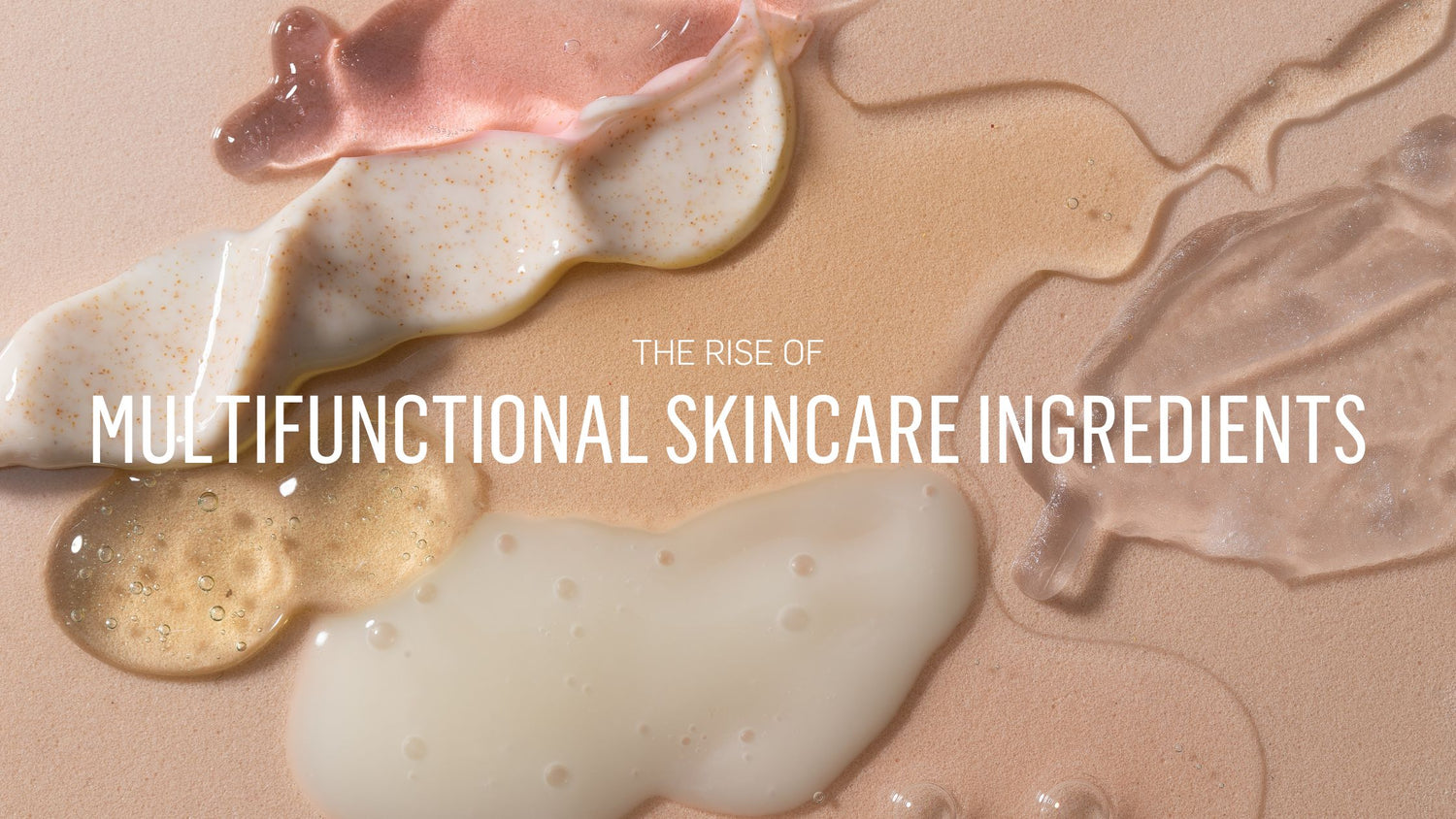I cannot stress enough the importance of wearing sunscreen everyday, even on cloudy days. It is a must to prevent premature aging and not to mention to reduce the risk of skin cancer.
While the sun provides us with essential Vitamin D, it also exposes us to harmful UV rays that can damage our skin. This is where sunscreen comes to the rescue! In today's blog post, we'll explore the common active ingredients used in sunscreens, how they protect the skin, their pros and cons, and which skin types they are most suitable for.
Types of active ingredients:
There are two types of active ingredients used for sun protection based on the way they work to protect the skin from sun's harmful rays:
-
Physical Filters (Zinc Oxide and Titanium Dioxide): These ingredients create a physical barrier on the skin's surface, reflecting and scattering UV radiation away from the skin.
-
Chemical Filters (Avobenzone, Octisalate, Octocrylene, Homosalate): Chemical filters absorb UV rays, converting them into less harmful heat and preventing them from penetrating the skin.
Common Active Ingredients in Sunscreen:
Sunscreens come in various forms, including lotions, creams, sprays, and gels, but they all contain one or a combination of active ingredients that provide sun protection. Here are some of the most common active ingredients found in sunscreens:
-
Zinc Oxide: Zinc oxide is a physical sunscreen ingredient that sits on the skin's surface and reflects UV rays. It offers broad-spectrum protection against both UVA and UVB rays. Zinc oxide is suitable for sensitive skin and provides excellent protection without irritating the skin.
-
Titanium Dioxide: Like zinc oxide, titanium dioxide is another physical sunscreen ingredient. It creates a protective barrier on the skin's surface, shielding it from UV radiation. It is also well-tolerated by sensitive skin and offers broad-spectrum protection.
-
Avobenzone: Avobenzone is a chemical sunscreen ingredient that absorbs UVA rays. It is often combined with other chemicals to provide broad-spectrum protection. Avobenzone can be effective, but it may break down when exposed to sunlight, making it less stable.
-
Octisalate: Octisalate is a chemical sunscreen ingredient that primarily absorbs UVB rays. It is commonly used in combination with other sunscreen actives to enhance protection against sunburn.
-
Octocrylene: Octocrylene is another chemical sunscreen ingredient that helps stabilize other UV filters. It offers protection against UVB rays and is often used in water-resistant sunscreens.
-
Homosalate: Homosalate is a chemical UVB filter that helps increase the SPF of sunscreen products. It is often used in combination with other sunscreen actives.
Did you know?
Vitamin C, when used in conjunction with sunscreen active ingredients, can provide an extra layer of sun protection and skincare benefits. Vitamin C is a powerful antioxidant that helps neutralize free radicals generated by UV radiation, which can cause skin damage and premature aging. By incorporating vitamin C into your skincare routine alongside sunscreen, you can enhance the skin's defense against UV-induced oxidative stress. This combination not only boosts your skin's ability to fend off UV damage but also promotes a more even skin tone and a brighter complexion. So, applying a vitamin C serum like Kalaia's Keep Smooth Day & Night Serum, before your sunscreen can be a smart strategy for achieving comprehensive sun protection and healthier, radiant skin.
Pros and Cons of Sunscreen:
Pros:
- Prevents Sunburn: Sunscreens with adequate SPF protect against sunburn caused by UVB rays.
- Reduces Skin Cancer Risk: Regular sunscreen use can lower the risk of skin cancers like melanoma and squamous cell carcinoma.
- Prevents Premature Aging: Sunscreen helps prevent premature aging signs like wrinkles and age spots.
- Broad-Spectrum Protection: Many sunscreens offer broad-spectrum protection against UVA and UVB rays.
Cons:
- Chemical Sensitivity: Some individuals may be sensitive to chemical sunscreen ingredients and experience skin irritation.
- Reapplication Required: Sunscreen needs to be reapplied every few hours, especially after swimming or sweating.
- White Cast (Physical Sunscreens): Zinc oxide and titanium dioxide may leave a white cast on the skin, which some people, specially those with darker complexions - including myself, find undesirable.
- Environmental Impact: Some chemical sunscreen ingredients can harm coral reefs and marine life.
Sunscreen based on your skin type:
- Sensitive Skin: Physical sunscreens containing zinc oxide or titanium dioxide are gentle and suitable for sensitive skin.
- Oily Skin: Look for non-comedogenic, oil-free sunscreens that won't clog pores.
- Dry Skin: Choose sunscreens with added moisturizing ingredients like hyaluronic acid or glycerin.
- Normal Skin: Most sunscreens are suitable for normal skin types; pick one that meets your specific needs.
Bottom line, sunscreens are essential for protecting your skin from the sun's harmful UV rays. Understanding the active ingredients, their mechanisms of action, and their pros and cons can help you choose the right sunscreen for your skin type and lifestyle. Whether you have sensitive skin, oily skin, or something in between, there's a sunscreen out there to keep your skin safe while you enjoy the great outdoors. So, make it a habit to never walk out the door without sunscreen.










